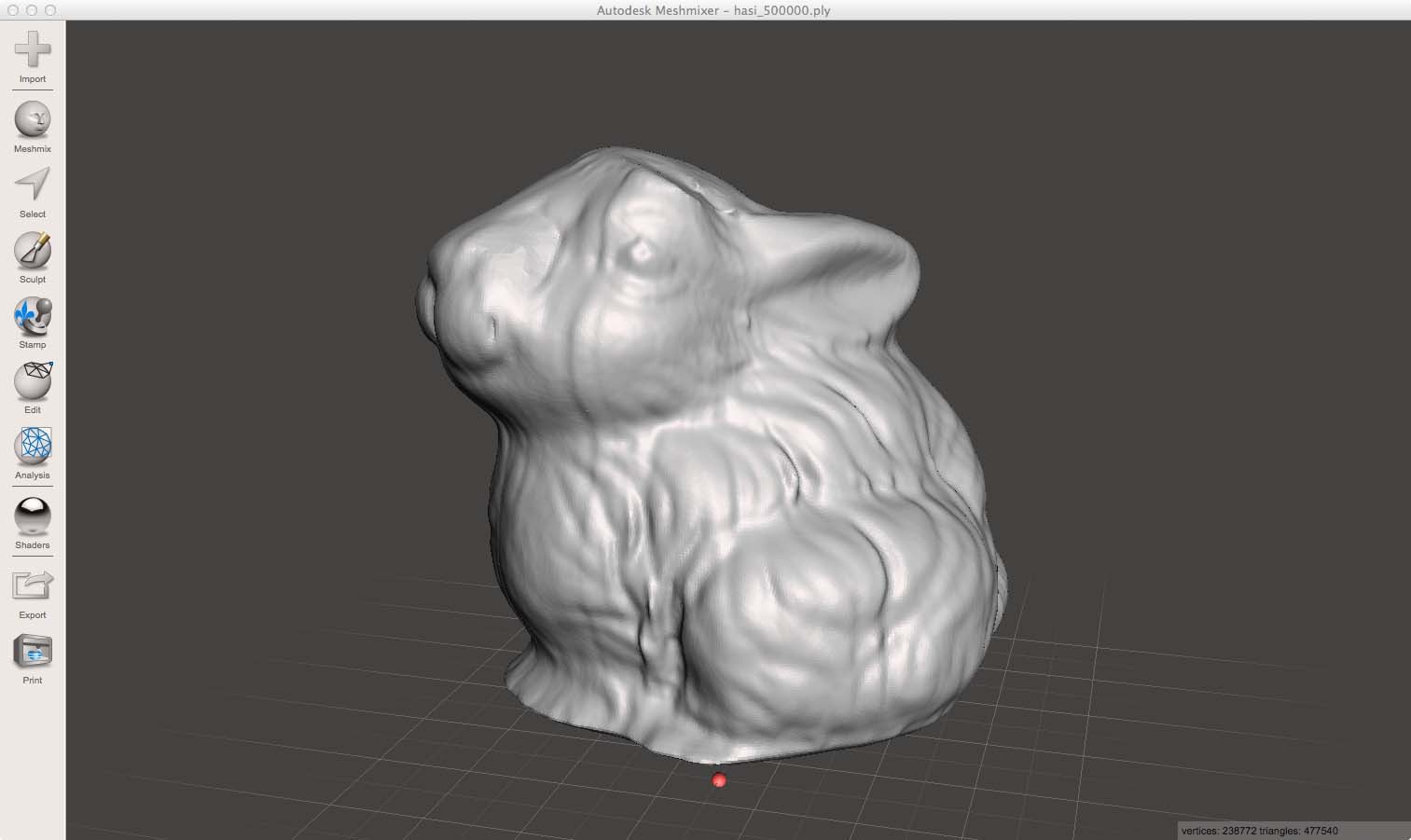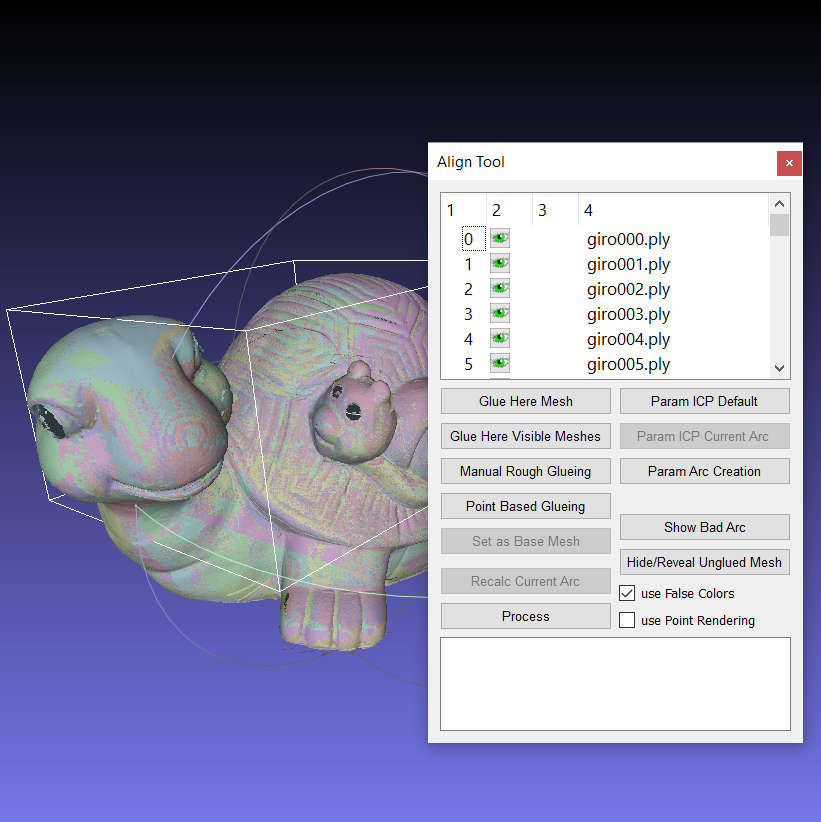

I/usr/lib/qt4/include/QtCore -I/usr/lib/qt4/include/QtCore -I/usr/lib/qt4/include/QtGui -I/usr/lib/qt4/include/QtGui -I/usr/lib/qt4/include/QtOpenGL -I/usr/lib/qt4/include/QtOpenGL -I/usr/lib/qt4/include/QtXml -I/usr/lib/qt4/include/QtXml -I/usr/lib/qt4/include -I. G++ -c -pipe -O2 -Wall -W -D_REENTRANT -DQT_NO_DEBUG -DQT_XML_LIB -DQT_OPENGL_LIB -DQT_GUI_LIB -DQT_CORE_LIB -DQT_SHARED -I/usr/lib/qt4/mkspecs/linux-g++ -I. Reading /data1/env/local/env/graphics/meshlab/meshlab/src/meshlabplugins/filter_meshing/filter_meshing.proĮven the non-GUI meshlabserver meshlabserver]$ make

Reading /data1/env/local/env/graphics/meshlab/meshlab/src/meshlabplugins/io_base/io_base.pro Uic: File generated with too old version of Qt Designer Reading /data1/env/local/env/graphics/meshlab/meshlab/src/meshlab/meshlab.pro Reading /data1/env/local/env/graphics/meshlab/meshlab/src/common/common.pro Using Qt version 4.2.1 in src]$ meshlab-qmake Simon:meshlab blyth$ cat meshlab/src/external/external.pro Simon:meshlab blyth$ vi meshlab/src/external/external.pro meshlab/src/external/levmar-2.3/levmar-2.3.pro name '*.pro' # look for qmake project files The functionality MeshLab has to offer comes in handy when you need to process unstructured 3D models.Simon:meshlab blyth$ find. You can use this application on a variety of platforms to edit, clean, heal, inspect, render, and convert models from 3D scanning. Or to put it in other words, MeshLab can be used to process and edit unstructured 3D triangular meshes.Īs mentioned above, MeshLab can be used on a variety of platforms.
#MESHLAB 64 BIT FOR MAC OS#
The application is available for 32 and 64-bit Windows editions, for Mac OS X, for Linux, for iOS, and for Android. So to sum it up, MeshLab is available for the most popular desktop and mobile operating systems out there.
#MESHLAB 64 BIT PC#
You can use it on your desktop PC and you can use it on your smartphone as well. The project you’re working on is displayed front and center on MeshLab’s interface. At the top there’s a bar that presents several buttons, each associated with various functions the application can perform. In the upper left hand corner, right where you would expect it to be, there’s a traditional File menu. Getting accustomed to this interface will not take long. You can import a variety of file types and view them into MeshLab: PLY, STL, OFF, OBJ, 3DS, COLLADA, PTX, V3D, PTS, APTS, XYZ, GTS, TRI, ASC, X3D, X3DV, VRML, ALN. After importing a mesh, you can edit it with MeshLab’s cleaning, remeshing, and colorization filters. You can also paint, measure, or slice a mesh. When you’re done, you can export your work as one of the following supported formats: PLY, STL, OFF, OBJ, 3DS, COLLADA, VRML, DXF, GTS, U3D, IDTF, X3D. MeshLab is released under a GNU General Public License. Process and edit unstructured 3D triangular meshes on Windows, Mac, or Linux with the open source MeshLab application. MeshLab is available for multiple platforms: Windows, Linux, Mac OS X, iOS, and Android.

Support for numerous file types is provided. Numerous filters you can use to edit meshes. MeshLab is open source.A typical STL file repair workflow contains the following steps:Īuto-repair. The STL repair software’s wizard will attempt to fix all major errors, including holes, separate shells, and intersections. A mesh consists of collections of connected triangles. It can contain multiple continuous surfaces that ideally are joined together while obsolete ones need removal.Ĭlosing holes, bridging gaps. Some comprehensive STL repair programs allow different ways of hole filling, such as planar, tangent, ruled, or freeform. This typically requires recalculating entire portions of the mesh.įiltering out double faces, double vertices, inverted normals, and sharp, narrow triangles. Stitching open edges and remaining holes.
#MESHLAB 64 BIT MANUAL#
Manual repair by deleting and creating triangles. The most popular and storage-friendly format is STL (StereoLiThography), which we will use for this article. STL files in a Binary format since it further reduces file size. As described in our Meshmixer tutorial, there are several other useful formats such as AMF, Collada, OBJ, and PLY, with specialized qualities for storing material, color, rendering, 3D scanning, and 3D printing information.


 0 kommentar(er)
0 kommentar(er)
